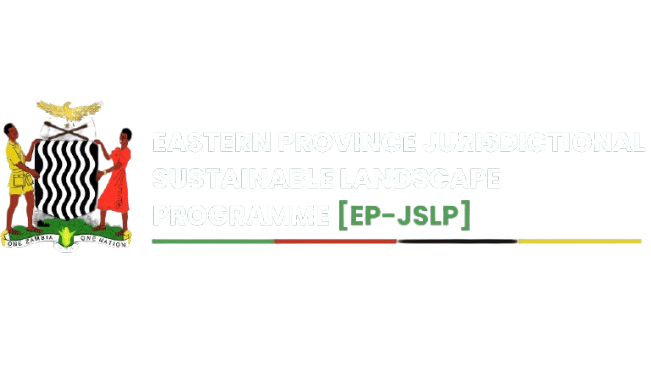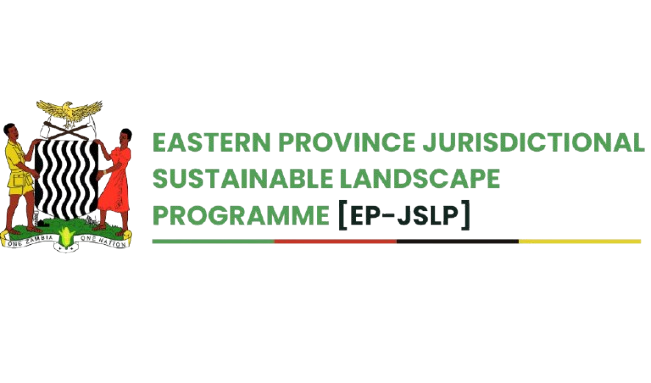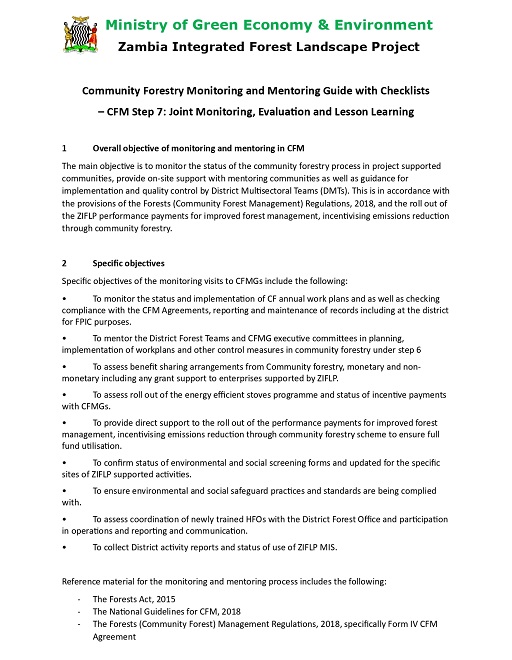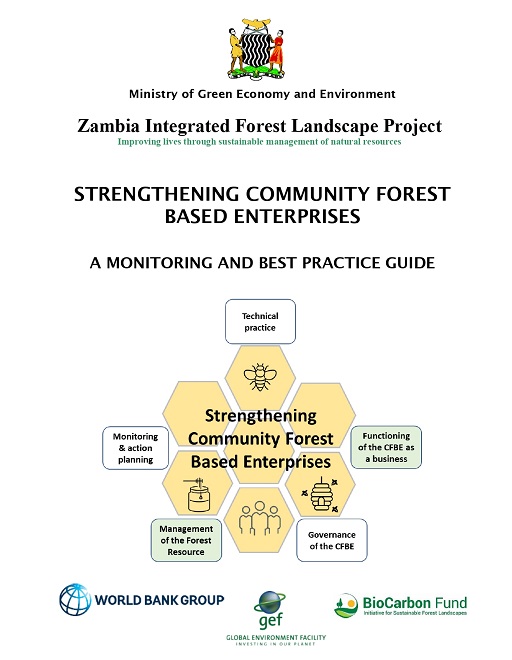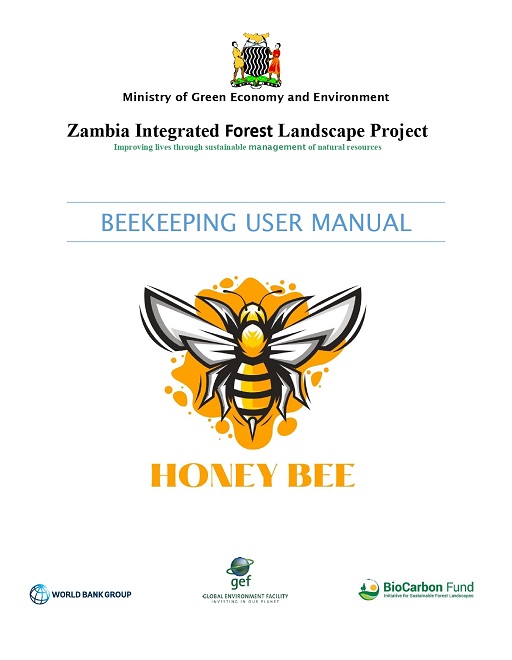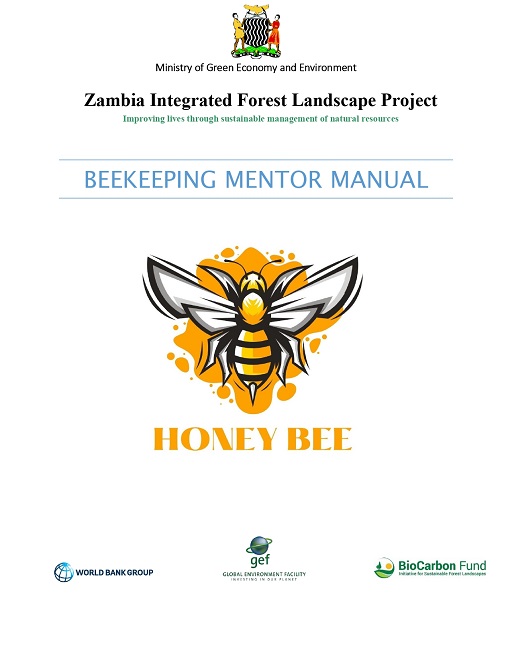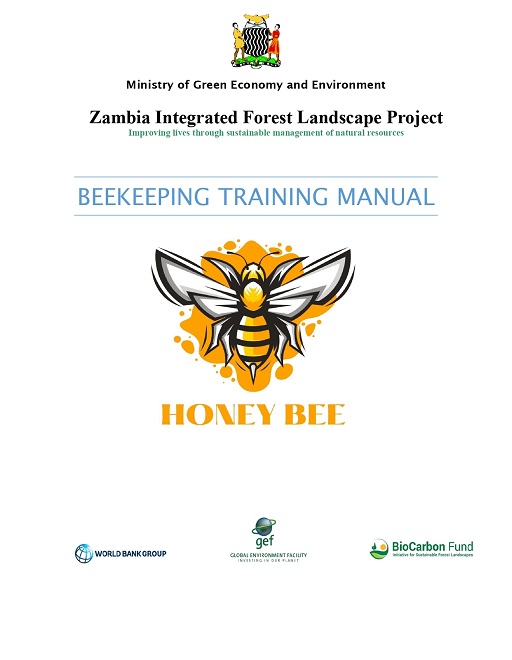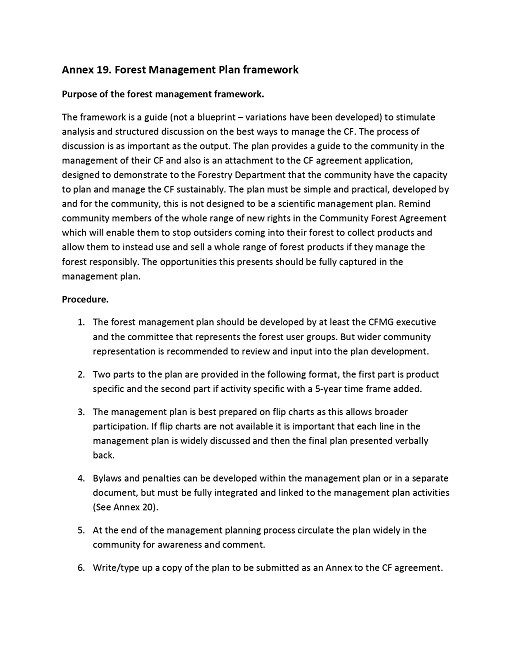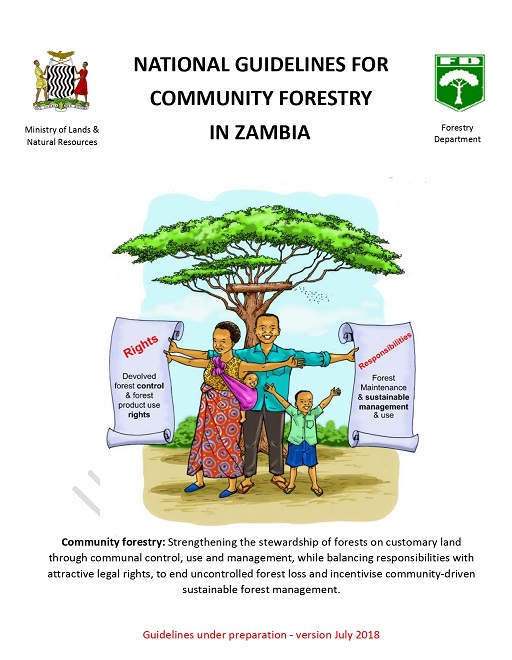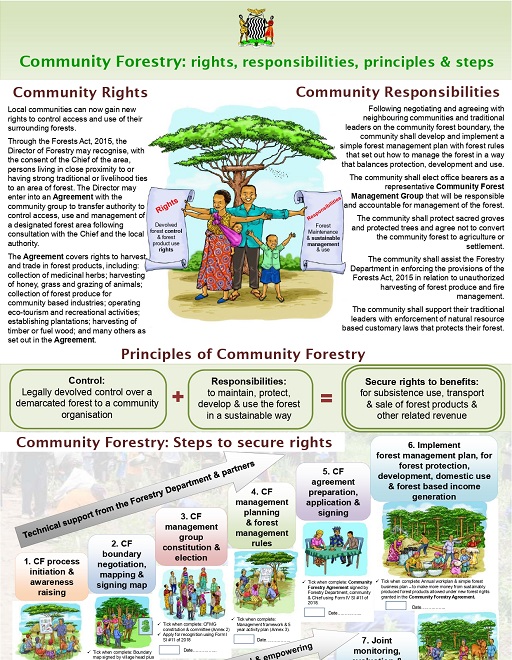The Forestry Department with technical and financial assistance from the Eastern Province Jurisdictional Sustainable Landscape Programme (EP-JSLP) is supporting the implementation of Community Forestry across Eastern Province. This is being accomplished by engaging communities and their traditional leaders, identifying areas of forest of importance to the community, developing participatory land and resource use plans, then forming Community Forest Management Groups (CFMGs). With consent of their Chief, these are then recognised by the Director of Forestry to be responsible for protection and management, including controlling access and use of their forest.
The project has supported a phased approach following the 7 steps outlined in the National Guidelines for Community Forestry in Zambia. Following formal recognition by the Director of Forestry, the community develops a simple forest management plan with forest rules that set out how to manage the forest in a way that balances protection, development, and use. This, along with the CFM Agreement entered into with the Director and witnessed by their Chief, sets out rights and obligations for the control, use, and management of their forest.
The project has supported strengthening the capacity of the CFMGs to control access, issue permits, collect revenue, and develop enterprises based on sustainable management of their natural resources. Sustainability of this approach is strengthened through a process of joint monitoring, evaluation, and shared learning.
The Eastern Province Jurisdictional Sustainable Landscape Programme (EP-JSLP) is a Government initiative in the Ministry of Green Economy & Environment, supported by the World Bank and partners. Its aim is to improve the livelihoods of rural communities in Eastern Province while supporting them to sustainably manage land, forests, and wildlife. The project provides support to the Forestry Department with expanding the community forest approach across the Province.

National Guidelines on Community Forestry
STEP 1 : Initiation and Awareness
Purpose: To set up and train the Community Forestry coordination and facilitation team, inform all relevant stakeholders about Community Forestry and seek community interest to voluntarily establish their own Community Forest
STEP 2 : Negotiation, Mapping & Signing
Purpose: Identification of suitable uncontested site for community forestry through broad consultation and negotiation. Once identified, developing a clear community forest boundary on the ground and making a map which is approved and signed by neighbouring communities and by the Chief.
STEP 3 : Management Constitution & Election
Purpose: Transparent and democratically selecting a merit-based Community Forest Management Group (CFMG) and attaining recognition of that group by the Director of Forestry.
STEP 4 : Management Planning & Rules
Purpose: To enable the community to collectively develop a practical guide and accompanying rules to manage the forest sustainably and productively, balancing forest use and enterprises with protection and development. The community forest management plan is also a requirement for the application for a community forestry agreement.
STEP 5 : Agreement Preparation & Signing
Purpose: To compile and submit the documentation for the CF agreement, attain approval and raise awareness on implications among all concerned parties.
STEP 6 : Management Plan Implementation
Purpose: To develop the capacity of the community to effectively control, develop, use and sell products from their community forest.
STEP 7 : Joint monitoring, evaluation & lesson learning
Purpose: To operationalise a responsive process of planning, monitoring, evaluation and lesson learning within the CFMG and government for Community forestry.
